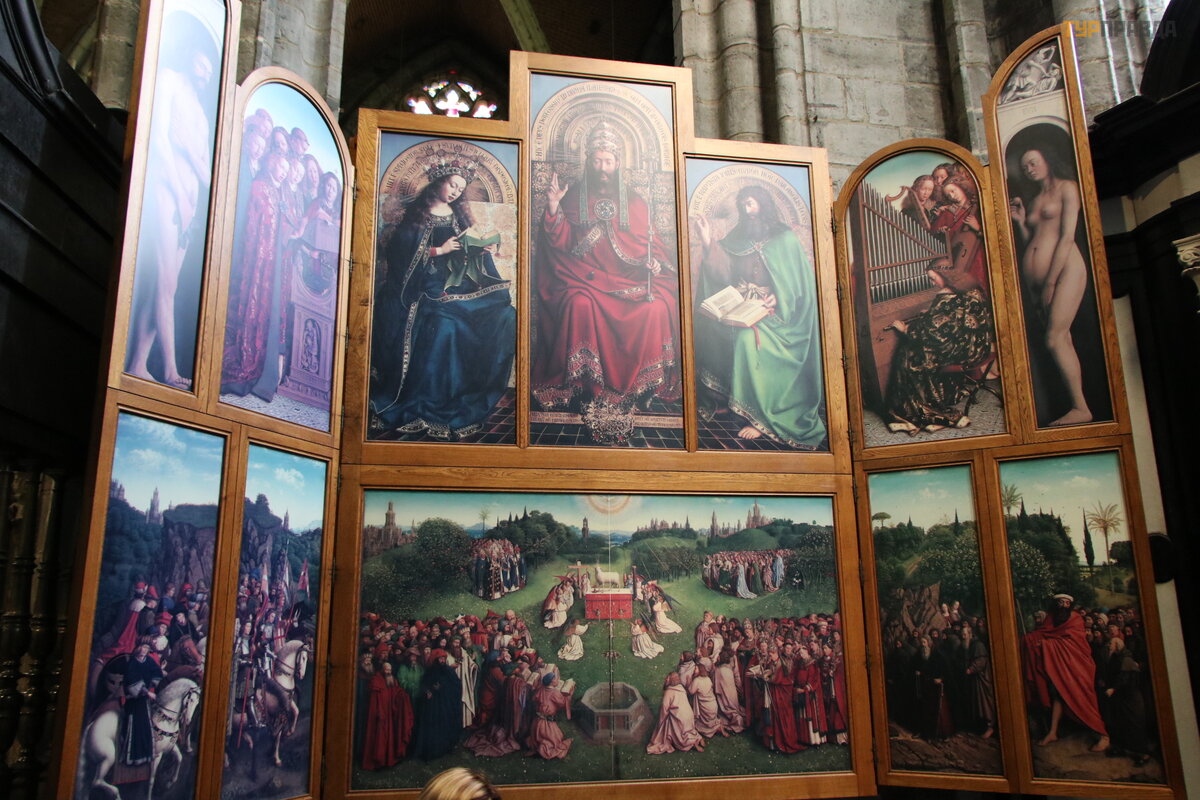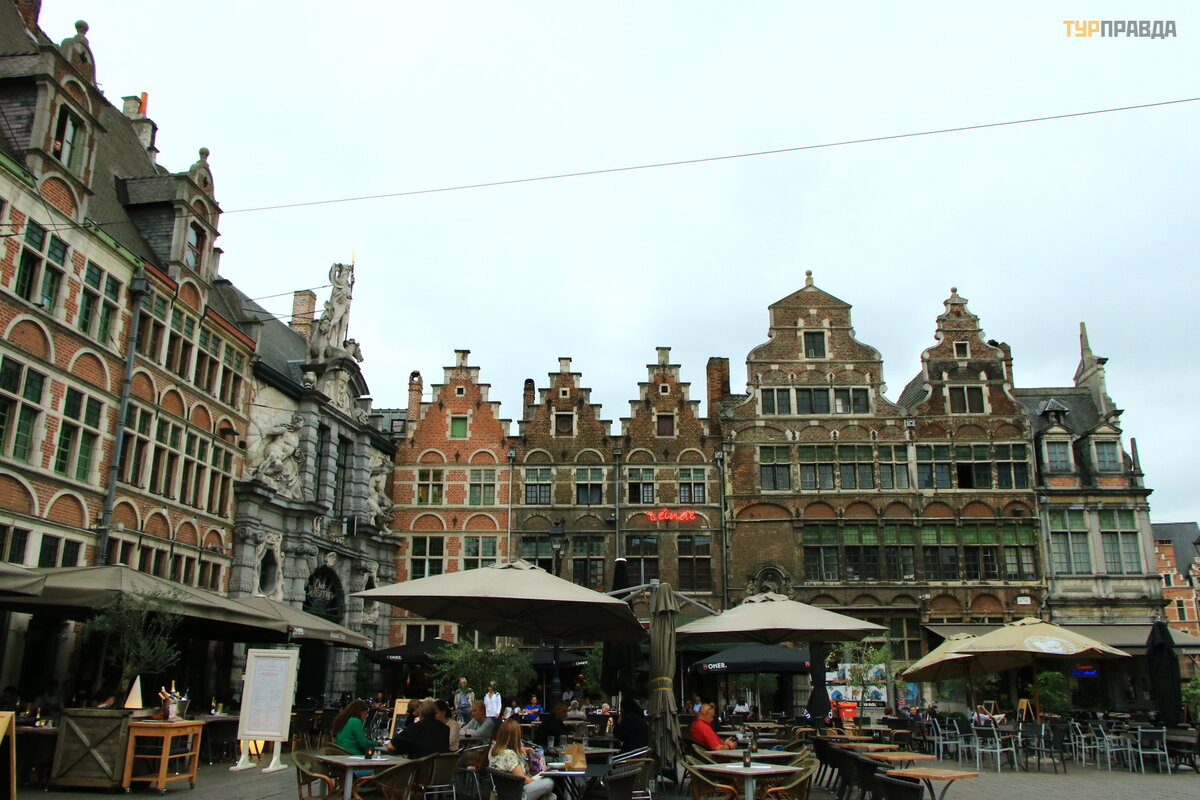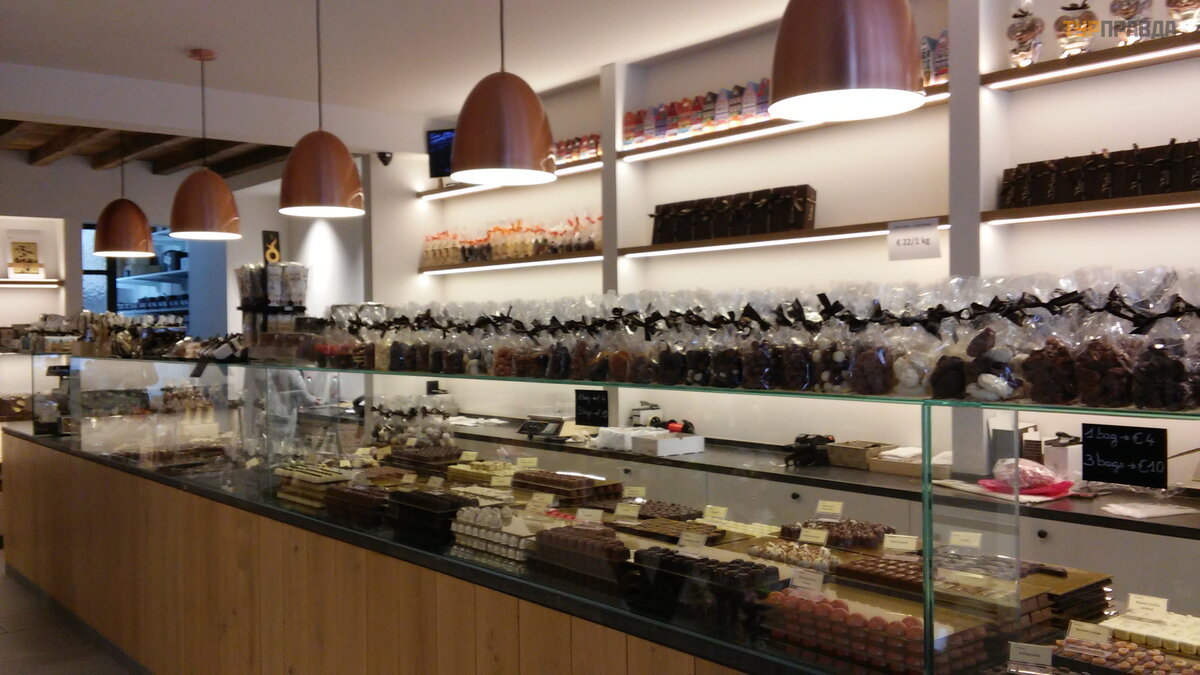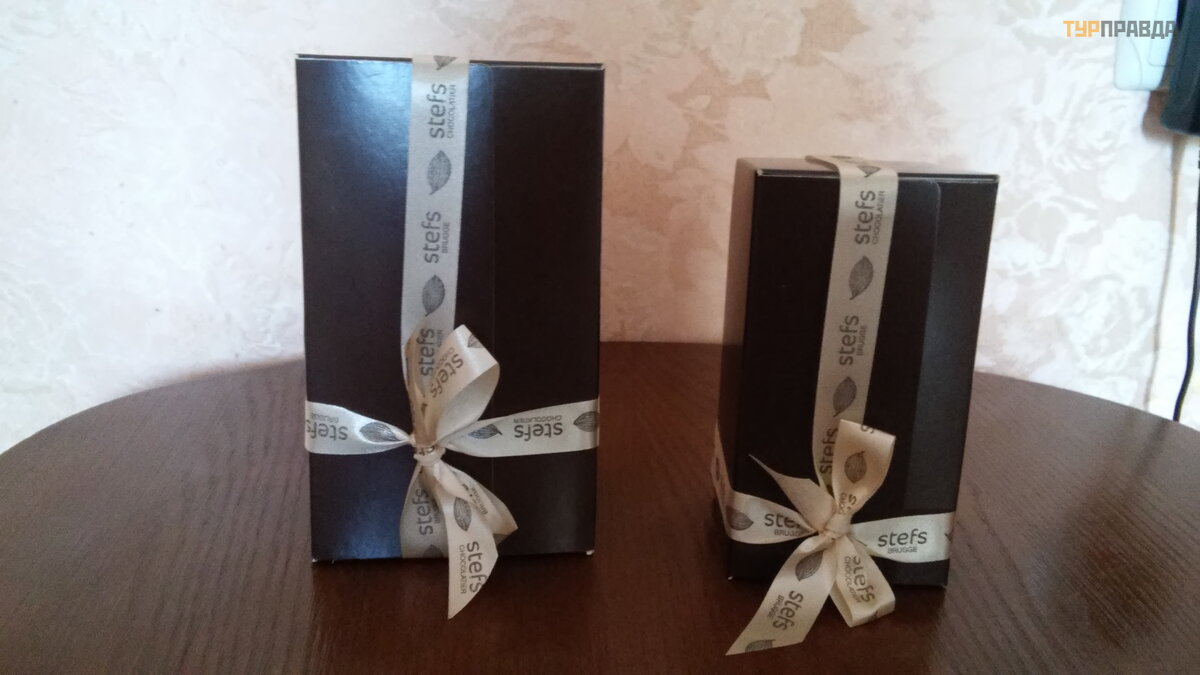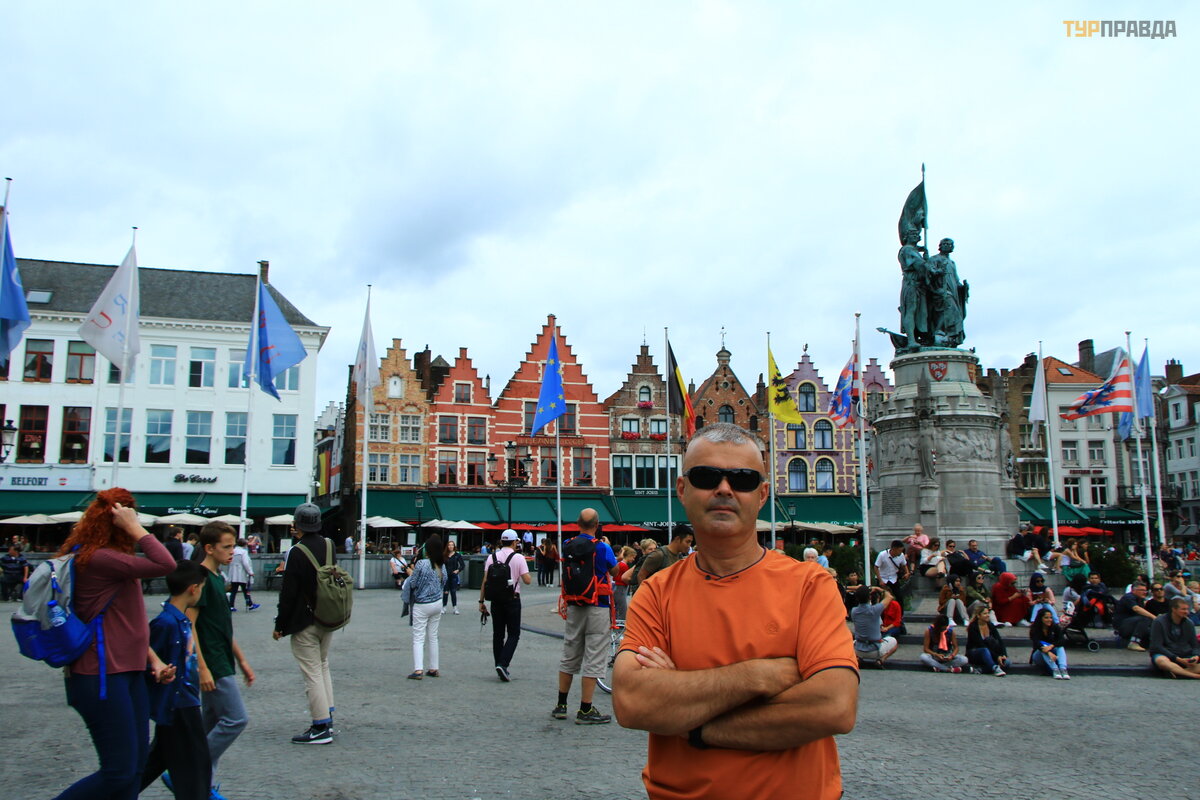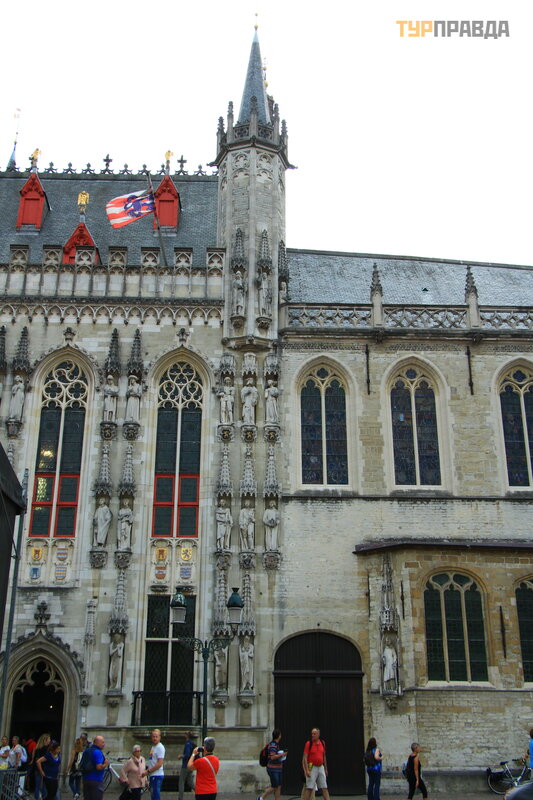Belgium. Masterpieces of architecture and chocolate - beer delight!
Belgium is a paradise for beer gourmets and chocolate gourmets!
Somehow it happened that Belgium is not very popular with tourists, unlike France or the Netherlands. And even, having asked advice from a native Dutch woman, who was our guide in the Netherlands, what should we see in Belgium, she heard: “Listen, is there a hundred mozna at all watching? The Belgians are all lazy, and the Dutch do everything for them, and a hundred to go there? ". Surprised by this advice, having read a lot about Flanders before, I decided to see everything with my own eyes.
And, lo and behold! Belgium turned out to be so my country that I could not even find at least one tiny flaw to complain about. This country is able to fall in love with itself at first sight! Switzerland was such a country for me, now Belgium has also been added.
This exquisite and unique taste of chocolate and the most delicate praline will haunt me for a long time. And the huge meringues of breathtaking taste and the famous Belgian waffles in caramel-fruit sauce, sold everywhere, will not leave indifferent even those with a sweet tooth.
Well, I’m generally silent about beer, everyone here will love this drink, even those who have never drunk beer before.
It seems to me that the Belgians elevated beer to the rank of a cult drink and in Belgium there is a special drinking culture, like wine, for example, in France. The Belgians are so respectful of their drink that each beer has its own special glass.
Well, we didn’t have glasses with us, so we had to drink, as they say, “from the throat”, that is, from bottles and jars, which did not stop us from enjoying this pleasant drink at all. The beer was so tasty that after drinking a bottle, they immediately opened the next one. I especially liked the raspberry-flavored hogarden rosé and the cherry scream. Well, hougaardin blanche isn't bad either.
But Belgium is famous not only for beer and chocolate, this country is the center of the European Union and the Benelux countries, it was she who was entrusted with the management of old Europe, and this says a lot. The Belgians are really different from their neighbors. They are not as freedom-loving as the Dutch, but not as frivolous as the French.
And how this country is rich in historical and architectural sights! I want to start my excursion with the ancient Flemish Ghent.
It was Ghent that became my favorite in the rays of the Benelux. You can describe its sights in one word:
Ghent is one big attraction!
This is a city of cathedrals and castles, historical squares and ancient embankments, unusual streets and houses, outstanding rulers and great artists, as well as a city of cleanliness, grooming and comfort!
A must see object for me was the Saint Bavo Cathedral, which houses the world-famous Ghent Altarpiece by the Van Eyck brothers. Bavo is a very real nobleman, a resident of Ghent, who distributed all his wealth to the poor and went to a monastery, for which he was canonized.
In the Cathedral, photography and video filming of the altar is prohibited, but we are Mongol-Tatars, so we could not help but capture the famous masterpiece.
The interior of the Cathedral impresses with luxurious decorations and art objects stored in the temple.
For some reason, the skeleton of a whale is suspended here, for what purpose it is in the cathedral, it is not clear to me. Although I heard some ridiculous story about the prophet Jonah, although this is more like a legend than a story. But still an interesting sight.
We leave the Cathedral of Bavona, and immediately our eyes see the Flemish Royal Theatre, built in the 19th century, located here on Bavona Square.
We visit another masterpiece - Saint Nicholas Cathedral.
What is very convenient in Ghent is to smoothly flow from one attraction to another, all objects are within walking distance. The only inconvenience is the location of the station, it is located on the outskirts and the historical center is about 5 km away, i. e. you need to walk for 20-25 minutes, but you will see a lot of interesting things from the life of the city, especially since you will walk along nice, clean washed streets. Belgium seemed to me the cleanest country of all the Benelux countries.
St. Nicholas Cathedral is the oldest church in Ghent. The building style is Schelde Gothic, this is when a special gray-blue stone is used.
And opposite the Church of St. Nicholas, on the opposite side of the street, the original building of the Guild of Masons of the 16th century opens up to our eyes. On top of the facade are six dancers who rotate around their axis with the help of the wind.
Another temple that cannot be ignored is
St. Michael's Cathedral. The temple was built over several centuries.
From the church across the River Lysthere is a picturesque St. Michael's Bridge.
The bridge offers stunning views of the architectural splendor of the medieval streets.
Here we see a beautiful building with turrets and naturally we think that this is another temple.
But no, it turns out - this is the City Post Office building, which is currently a commercial center.
The building is an architectural monument erected at the end of the 19th century in the Neo-Gothic and Neo-Renaissance styles. The facade is decorated with statues depicting Belgium, Flanders and Wallonia. The building is traditionally dominated by a clock tower.
And what beautiful squares here. One of the oldest squares in Ghent is Friday Market Square. And it got its name because a weekly market has been gathering here on Fridays since the 12th century, and this event has already become a tradition. The square is surrounded by buildings dating back to the 15th -19th centuries, and in the center is a monument to Jacob van Arteveld, the leader of the anti-French uprising of the 14th century. The area, surprisingly, is deserted, and we calmly sat here in silence, drinking another bottle of beer with pleasure.
Another architectural monument is the City Hall.
Here we see a mixture of architectural styles. The facade is clearly divided into two parts belonging to different eras, where there are elements of the Renaissance, Baroque, Gothic and pseudo-Empire.
The next architectural monument is the Beffroy Tower.
In the Middle Ages, the population was notified from the Tower if enemy troops were approaching the city walls, or that a natural disaster had occurred somewhere. In the event of such an event, the alarm bell rang. And now the tower is a symbol of the freedom of Ghent.
Ghent also has its own ancient Castle of the Counts of Flanders. This is a powerful fortress of the 12th century.
It was used as a defensive fortress, the residence of the city and the mint. Inside the castle is a museum of medieval weapons.
The castle is surrounded on all sides by a moat.
Not far from the count's castle is a large old Meat House.
It was created back in the 15th century and at that time served as the home of the butchers guild and the meat market. At that time, the sale of meat was allowed only in specially designated places.
And what beautiful embankments in Ghent! They are located on a river with an unusual name Lis. This is a whole architectural complex, where the historical houses of trade guilds have been preserved. The most popular streets are Herb Street and Grain Street.
You can relax on the parapet or take a boat ride.
There are many restaurants and open-air cafes with terraces everywhere, anywhere you can sit down to relax by drinking a glass of beer or eating french fries (by the way, the Belgians believe that not only beer and chocolate are their feature, but also french fries they attributed to their culinary masterpiece).
Walking in this Middle Ages, we got a lot of pleasure and a charge of positive emotions and impressions from old houses and streets, embankments and cathedrals, beer paradise and Belgian hospitality.
I was really sorry to leave this city, but I had to leave it to get acquainted with another masterpiece of Flanders - fabulous Bruges!
The distance from Ghent to Bruges is only 30 km, the fare is 5 euros.
Bruges is a small town, somewhat reminiscent of Venice in miniature. The city exudes antiquity and mystery, it is indeed very old, it was founded in the 3rd century from the birth of Christ. And, probably, to emphasize this detail, the only transport in the city center is carriages with horses, maybe that's why horses are treated with special respect here and even a monument was erected to them on Vallein Square.
To feel like an aristocrat and visit the real Middle Ages, you need to ride in an old carriage.
If in Ghent we enjoyed beer, then in Bruges we could not tear ourselves away from chocolate, the aroma of which spread throughout the neighborhood, because in this city there are a lot of all kinds of private pastry shops and shops offering delicious chocolate treats for every taste.
I especially liked the handmade pralines. Home can be bought in assorted packages with different types of pralines. Packs of 250.500, 1000 grams. The cost for 250 grams is 5.50 euros, and for 500 grams - 11 euros.
this is how they will pack them for you
Being in the euphoria of the chocolate paradise, we went to get acquainted with the city.
The starting point, where the heart of the city beats, is Market Square Grote Markt.
Until now, preserving the traditions, various covered markets and trade pavilions operate on the square. And the square is surrounded by houses, where you can see the coats of arms of trade guilds.
But the building of the City Hall is considered the most beautiful in Bruges. This sumptuous piece of medieval architecture flaunts Place Burg. This is one of the oldest buildings not only in Bruges, but in all of Belgium. (14th-15th century, construction took 45 years). This architectural masterpiece was built in the Gothic style, but it seemed to me as if woven from lace, and they say that no other town hall has overshadowed the splendor and wealth of the Town Hall in Bruges.
The niches in the walls are decorated with stone statues of the counts of Flanders (but they say that these are copies).
From the side of the town square we get to the Basilica of the Holy Blood. The chapel was built in the 12th century in the late Gothic and Renaissance style. It is famous for the fact that it contains a sacred relic - the blood of Christ.
From any place, wherever you are, a high tower is visible - this is the Tower of the Church of the Virgin Mary.
There is no definite architectural style here, the construction of the church lasted from the end of the 13th century to the end of the 15th century, so both the Romanesque and Gothic styles are present here. Of course, the most famous part of it is the tower 122 meters high.
I just can't understand, the tower is all brick, how has it not fallen yet?
This church is also famous for the fact that it houses the sculpture of the Madonna by Michelangelo, as well as the majestic tombs of Mary of Burgundy and Charles the Bold.
And opposite the church is a former shelter and hospital for all those in need - St. John's Hospital. This hospital was built in the 11th century, and it was run by nuns from the Augustinian order who lived in the same monastery. The hospital worked until the 19th century, and now there is an art museum here.
Another object that cannot be overlooked is the Befroy Tower, 83 meters high. The base of the tower was built in the 13th century, but the octagonal bell tower was completed only in the 15th century.
The tower has as many as 47 bells, by the way, you can see them by breaking almost 400 steps and going up to the observation deck. The bells ring every hour, and each bell has its own unique melody.
Surrounded by all these architectural masterpieces are the squares and restaurants where you can just sit with a glass of beer and talk about the city, mentally transporting yourself to the Middle Ages.
And so our acquaintance with the amazingly beautiful and ancient Flanders ended. 
And we are leaving for Brussels to get acquainted already with the capital life of Belgium and the European Union. (to be continued)










